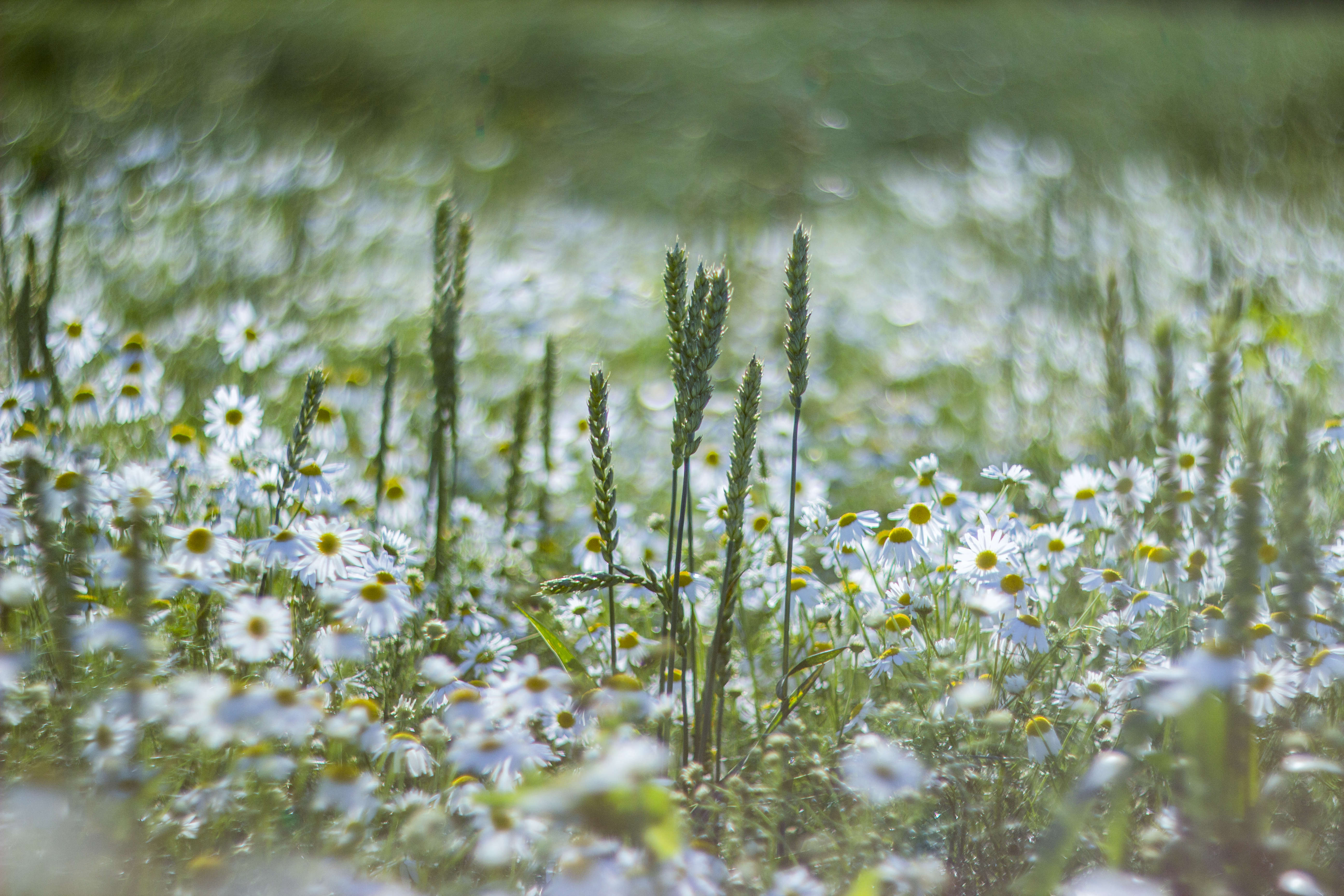Chamomile, Matricaria chamomilla: “Calming Companion”
Chamomile is truly a plant with a purpose. Dating from ancient times, its usefulness as a medicinal herb is well documented. And while most people immediately associate chamomile with the calming tea made from the herb, the plant’s cheery, daisy flowers make it a rewarding ornamental plant in a garden bed or wildflower meadow.
Please keep reading to learn more about this useful flowering herb.

Chamomile is the common name for several plants in the Asteraceae family. Derived from the Greek word that means “‘earth apple,” chamomile’s aroma is reminiscent of apples.
Chamomile has been used medicinally for thousands of years, dating back to the ancient Greeks, Egyptians, and Romans. Back then, and now, chamomile is traditionally used for many ailments and conditions, including inflammation, insomnia, stomach discomfort, and wounds. Note: Chamomile is a relative of ragweed so those with a ragweed allergy should avoid using any preparation of the herb.

Two well-known chamomile species exist: German and Roman. German (Matricaria recutita) is an annual plant most often used for medicinal purposes because the oils are more potent. This species also has a recognizable aster flower with a yellow center surrounded by evenly spaced white florets. It is more of an upright annual, growing to a height of about two feet before reseeding.

Roman (Chamaemelum nobile) is a low perennial, more of a creeping ground cover with small, daisy-like flowers decorated with yellow centers and a white petal skirt and denser feathery green foliage. It unfortunately doesn’t bloom as much or as often as the German variety. One noted type is C. nobile ‘Treneague’. This creates a super dense mat with gray-green foliage. It is nonflowering but has highly aromatic foliage. This dwarf chamomile carpets the edges of paths and beds of perennials, and also makes a superb lawn substitute.
To thrive, a chamomile lawn needs sun, well-draining soil, more moisture than taller types of chamomile, and light foot traffic. This creates a super dense mat with gray-green foliage.

Like most herbs, chamomile does not want to be fussed over, which is a good thing: Avoid killing your chamomile with kindness.
Cheat Sheet
- Chamomile looks charming in a cottage style garden planted among hydrangeas, geraniums, and roses, and also in herb gardens.
- A great companion plant in vegetable gardens, chamomile’s strong scent often deters unwanted bugs that prey on your kale and squash. Tip: Water chamomile infrequently to ensure a stronger smelling/more repellent plant.
- The flowers of the plant possess beneficial essential oils; move your plant to a sunnier location if flowering fades. Beneficial bugs and pollinators are also attracted to the flowers.
Keep It Alive
- Grow chamomile in full sun to partial shade; if conditions are too shady, it won’t bloom.
- It is easier to establish this herb by planting starts from containers than from directly seeding, although if this plant self sows in loose soil it can be very prolific. Plant seedlings in the spring.
- Both the Roman and German types require the same care: limited fertilizer (too much makes for weakly flavored leaves and reduced flowering). Both are drought tolerant (but need a drink in prolonged drought and like sandy, well-draining soil.

Read more design and growing tips at Chamomile: A Field Guide. Ready to design and plant a spring herb garden? See more design ideas and growing tips in Hyssop: A Field Guide in our curated Garden Design 101 plant guides. And don’t miss:
- Everything You Need to Know About Herb Gardens
- Expert Advice: 10 Tips to Get Your Garden Ready for Spring
- 10 Easy Pieces: Heirloom Seeds for Spring
- Edibles 101: A Field Guide to Planting, Care & Design
- The New Vegetable Garden: 8 Favorite Edible Backyards












Have a Question or Comment About This Post?
Join the conversation (4)